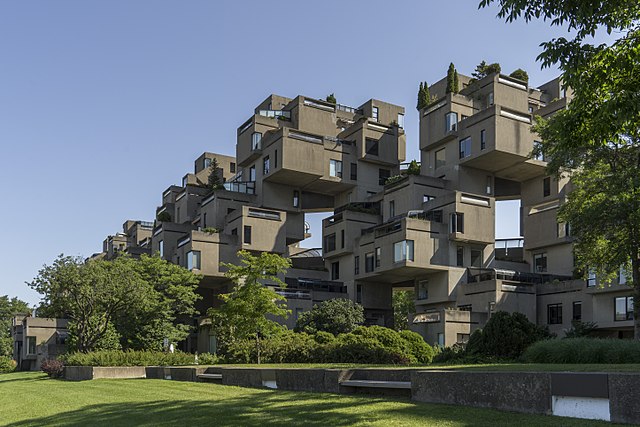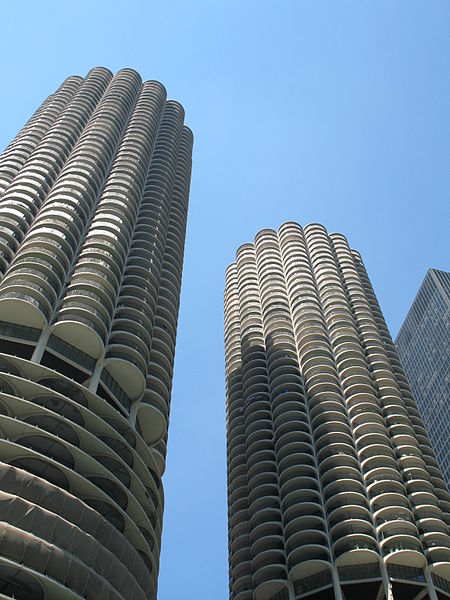Megastructure (planning concept)
Megastructure is an architectural and urban concept of the post-war era, which envisions a city or an urban form that could be encased in a massive single human-made structure or a relatively small number of interconnected structures. In a megastructural project, orders and hierarchies are created with large and permanent structures supporting small and transitional ones.
Ponte Vecchio in Florence, Italy
Fumihiko Maki in 2010
Habitat '67, a housing complex built for Expo 67
Metabolism (architecture)
Metabolism was a post-war Japanese biomimetic architectural movement that fused ideas about architectural megastructures with those of organic biological growth. It had its first international exposure during CIAM's 1959 meeting and its ideas were tentatively tested by students from Kenzo Tange's MIT studio.
The Nakagin Capsule Tower in Tokyo displayed small apartment units (capsules) attached to a central building core.
Marine City sketch by Kikutake, 1958
Kikutake used a photo of Marina City to illustrate the idea of capsules plugged onto a central tower.
Tokyo Bay Plan, project of the Metabolist and Structuralist movement, 1960 (Kenzo Tange)







